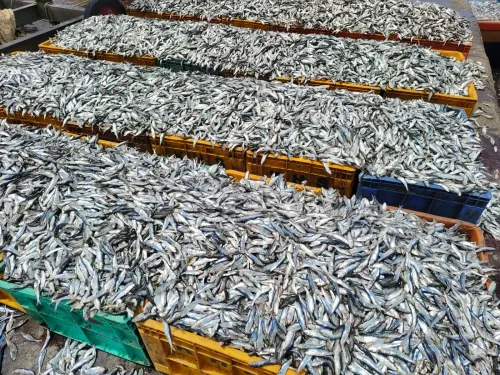How do GST reforms transform Jharkhand’s economic landscape?

Synopsis
Key Takeaways
- Significant tax reductions enhance affordability for consumers.
- Boosts growth in steel and heavy engineering sectors.
- Encourages employment growth through increased production.
- Strengthens Jharkhand's position in global value chains.
- Stimulates demand across various industries.
New Delhi, Oct 11 (NationPress) The Goods and Services Tax (GST) reforms have led to significant reductions in tax rates across key industries, resulting in a transformational effect on Jharkhand’s economic environment by decreasing costs and enhancing affordability, according to a statement from the government on Saturday.
Steel and heavy engineering serve as the foundation of Jharkhand’s industrial growth, representing nearly 20–25 percent of India’s total steel production.
The latest GST reforms further bolster the state's industrial progress by providing advantages to sectors that utilize Jharkhand’s steel.
The tax rate for two-wheelers (bikes up to and including 350cc) and small cars has been reduced from 28 percent to 18 percent, while tractors under 1800cc now incur a tax of 5 percent instead of 12 percent.
Similarly, the tax on tractor parts has decreased from 18 or 12 percent to 5 percent, and commercial goods vehicles from 28 percent to 18 percent.
Moreover, GST rates for auto components have been lowered from 28 percent to 18 percent.
Jharkhand is home to major industrial centers such as Jamshedpur (Tata Steel) and Bokaro (SAIL-Bokaro Steel Plant), alongside a comprehensive network of metallurgy-based supply chains across Singhbhum and Bokaro districts.
This ecosystem supports a substantial formal workforce of over 1 lakh individuals (1,04,309 as recorded in 2022–23 by the Ministry of Statistics and Programme Implementation) and sustains a dense base of vendors and MSMEs involved in fabrication and services.
Importantly, these rate reductions lower costs throughout the auto and machinery value chain by 7.8–11 percent, making vehicles and equipment more affordable and stimulating demand.
The surge in production, logistics, and fabrication promotes higher capacity utilization in Jharkhand’s steel and heavy engineering sectors, leading to increased employment, more orders for MSMEs, and enhanced connections within the state’s manufacturing framework.
The main consumers of Jharkhand’s steel and heavy engineering outputs include the domestic construction, infrastructure, automotive, and capital goods sectors.
The state also exports value-added steel products to significant international markets, including the US, China, Japan, Nepal, Bangladesh, and Europe, thereby solidifying its role as a vital player in both local and global value chains.
These GST reforms not only stimulate local consumption but also improve the international competitiveness of Jharkhand’s industrial and mineral exports.









